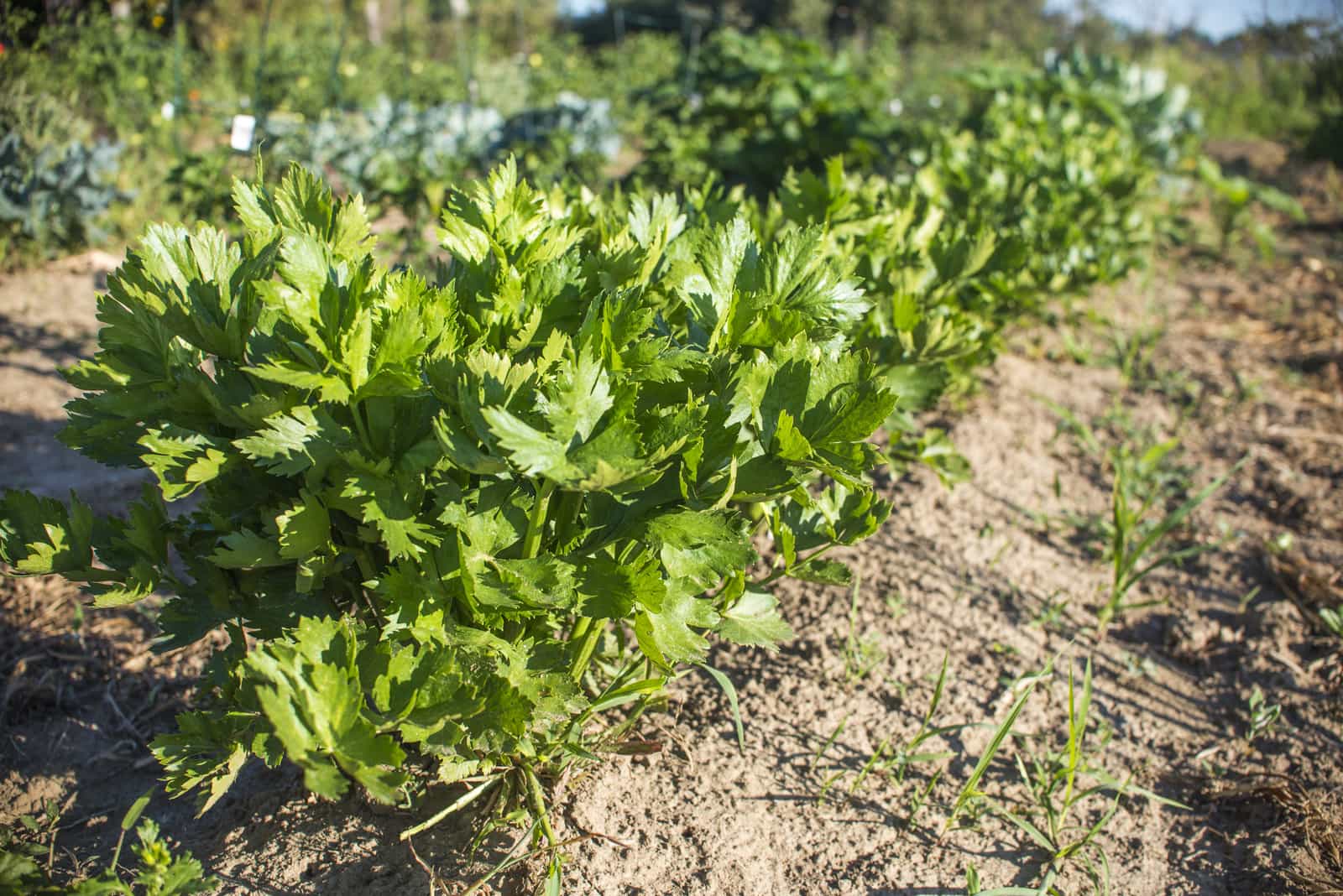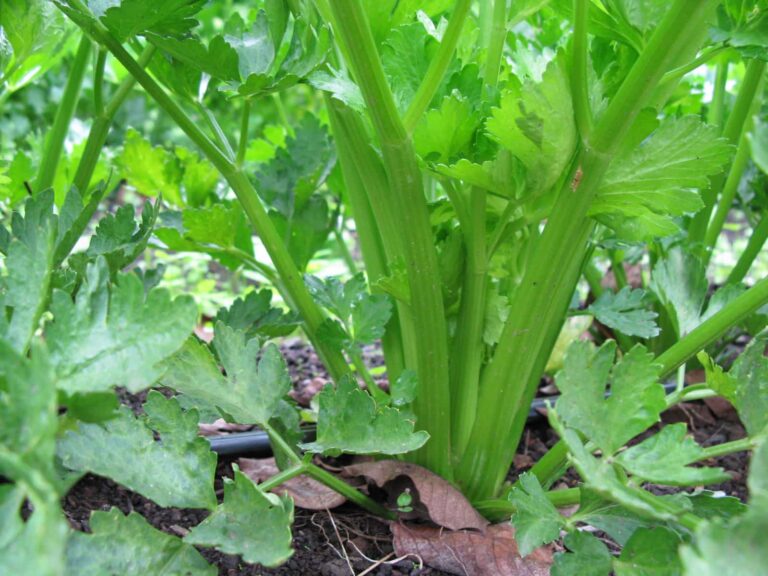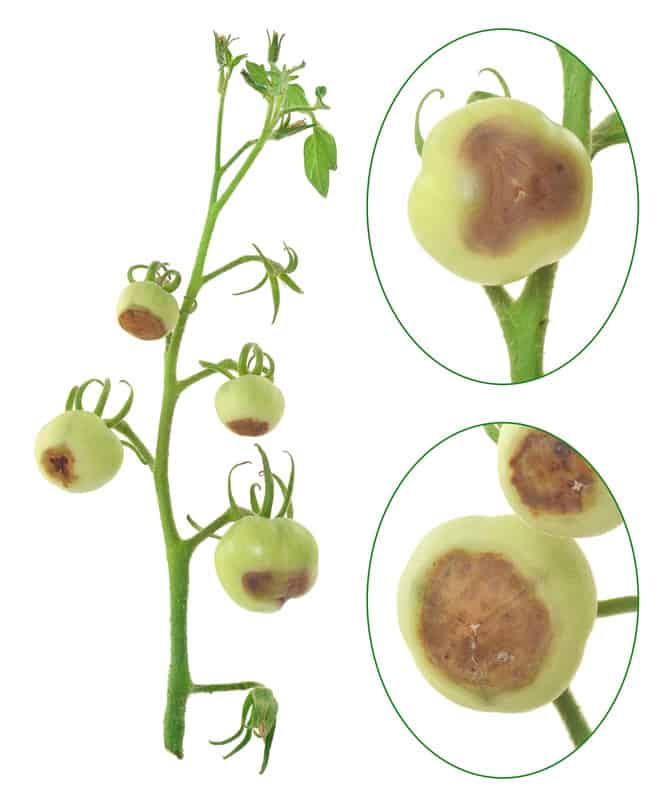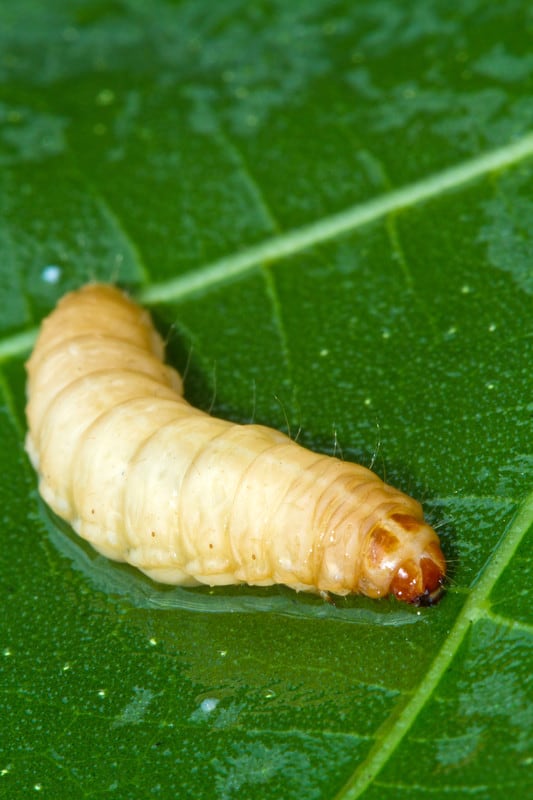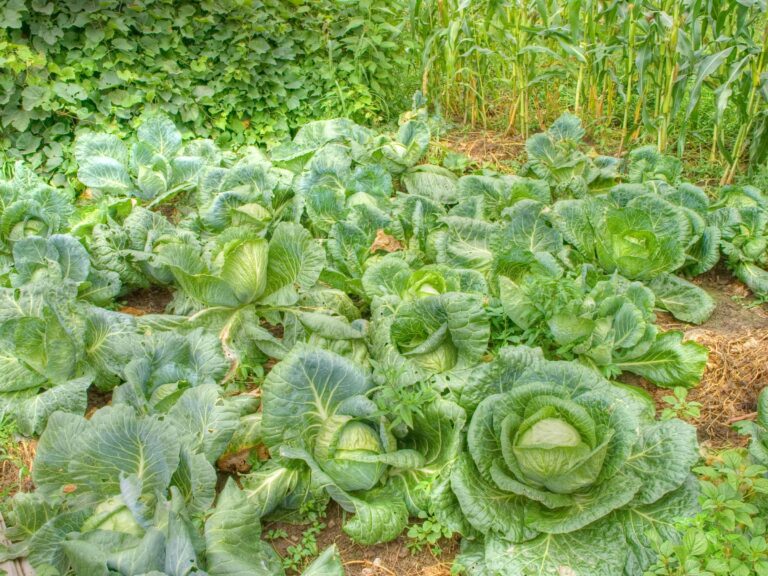Celery Growing Problems: Troubleshooting
Celery requires plenty of moisture, fertile soil, and a long, cool growing season.
You can start celery from seed, but germination is slow–about four weeks.
Sow seeds indoors at least 10 weeks before seedlings are to be set out.
A better plan might be to purchase celery starts when you are ready to plant.
Even with moisture, fertile soil, and the right climate for growing, celery is seldom trouble-free. Celery is susceptible to many pests and diseases. Here is a list of possible celery-growing problems matched with cures and controls.
Seed and seedling problems
Seeds rot or seedlings collapse with dark water-soaked stems as soon as they appear
Damping off is a fungus that lives in the soil, particularly where humidity is high. Do not plant in cold, moist soil. Make sure the soil is well drained.
Seedlings are stunted, plants appear stunted; roots appear to have knots or beads
Root-knot nematodes are microscopic worm-like animals that live in the film of water that coat soil particles; some are pests, and some are not. Root-knot nematodes feed in the roots and stunt plant growth; they are most common in sandy soils. Rotate crops. Solarize the soil with clear plastic in mid-summer.
Young stems chewed
Young earwigs feed on plant shoots and eat holes in foliage. Most often the damage is tolerable and the infestation is light. For a heavy infestation, use traps of rolled wet paper or old flowerpots stuffed with paper to catch earwigs at night. Dump them in soapy water. Keep the garden free of plant debris. Spray with hot pepper and garlic repellent.
Leaf and stem problems
Leaves curl under and become deformed and yellowish
Aphids are tiny, oval, and yellowish to greenish pear-shaped insects that colonize the undersides of leaves. They leave behind sticky excrement called honeydew which can turn into a black sooty mold. Remove with a blast of water. Use insecticidal soap. Aluminum foil mulch will leave aphids disoriented.
Tunnels or blotches in leaves
Leafminer larvae tunnel inside leaves. Destroy infected leaves and caterpillars. Cultivate the garden to destroy larvae and keep adult flies from laying eggs. Cover crops with floating row covers to exclude flies.
Leaves folded under and webbed; holes chewed in leaves and stalks
The celery leaftier is a pale green caterpillar with a white stripe down its back that grows to ¾-inches long; the adult moth is small brown with dark wavy lines in its wings. Handpick and destroy. Remove leaves that shelter caterpillars. Use Bacillus thuringiensis.
Irregular small holes eaten in leaves
A cabbage looper is a light green caterpillar with yellow stripes running down the back; loops as it walks. Keep the garden clean of debris where adult brownish night-flying moths can lay eggs. Cover plants with spun polyester to exclude moths. Pick loppers off by hand. Use Bacillus thuringiensis. Dust with Sevin or rotenone.
Irregular holes in foliage and stems
Celeryworm is the grown and white larva of the black swallow-tail butterfly. Usually, few are found. Pick off by hand. Spray with Bacillus thuringiensis (Dipel). Spray or dust with Sevin, pyrethrum, and rotenone.
Leaves are eaten and plants are partially defoliated
Blister beetles and tomato hornworms eat leaves. Handpick insects and destroy them. Keep the garden weeds and debris. Cultivate in spring to kill larvae and interrupt the life cycle. Pick off beetles by hand. Spray or dust with Sevin or use a pyrethrum or rotenone spray.
Large holes are eaten in leaves; trails of sliver slime
Snails and slugs prefer cool temperatures. Handpick and destroy; place protective borders of sand, lime, or wood ashes around plants. Mulch with wood shavings or oak leaves.
Tips and leaf margins become streaked and look scorched
Magnesium deficiency. Have the soil tested. Use magnesium chelates. Plant resistant varieties: Emerson Pascal, Utah 52-75.
Brown spots on leaves and stems; plants become stunted and die
Late blight of celery is caused by Septoria fungus a soil and seedborne disease triggered by heat and humidity following a rainy period. Keep the garden clean and free of weeds. Remove infected plants. Improve soil drainage.
Yellow spots on outer leaves enlarge to become gray-brown streaks
Celery early blight or Cercospora leaf spot is a fungal disease spread by heavy rainfall and warm temperatures. Keep weeds down in the garden area; they harbor fungal spores. Avoid overhead watering.
Mottled green and yellow leaves; zigzag bands may develop, distorted leaves
Mosaic virus has no cure; it is spread from plant to plant by aphids and leafhoppers. Plant disease-resistant varieties. Remove diseased plants. Remove broadleaf weeds that serve as virus reservoirs.
Zigzag paths into the crown and heart of celery
White with brown, legless grubs are the larvae of the carrot weevil, a dark crown to coppery, hard-shelled weevil to 1/5 inch long. Stunted plants Carrot weevil larvae are white grubs with dark heads that feed at the crown of celery.
Central leaves turn dark
Similar to blackheart, this is the work of the tarnished plant bug a greenish yellow to brown bug to ¼-inch long with yellow triangle marks at the end of each wing. The tarnished plant bug sucks sap from the plant causing the tissue to break down; the leaves at the center of the plant turn gray and black while the outer stalks appear healthy.
Stalks problems
Twisted, brittle stalks; plants yellowed and stunted
Aster yellows is a mycoplasma disease spread by leafhoppers. Remove infected plants. Control leafhopper. Keep the garden free of weeds which can harbor disease.
Inner stalks and leaves die at tips and turn brown or black
Blackheart is associated with soil calcium deficiency. Calcium deficiency can inhibit the uptake of water into plants. Increase watering and mulch to conserve soil moisture. Test soil; add gypsum or limestone if the soil is calcium deficient. Maintain soil pH between 6.5 and 8.0. Plant disease-resistant celery varieties: Cornell 19, Emerald, Emerson, Golden Pascal.
Celery stems crack crosswise; stems are stiff and brittle; leaf edges may be streaked and brown
Boron deficiency is often found in alkaline soils. Test soil. If deficient, add 2 ounces of borax per 30 square yards. Plant disease-resistant varieties of celery: Golden Self-Blanching, Dwarf Golden Self-Blanching, Giant Pascal, Utah 52-70.
Water-soaked spots on stalks with cottony pink mold at the base
Pink rot fungus grows at soil surface level in cool, wet conditions. Remove and destroy infected plants. Keep the garden free of weeds where fungal spores can rest.
Stalks tough, bitter
Possibly: stalks over-mature; high temperatures; dry soil; poor fertility. Harvest when tender. Plant so that celery comes to maturity in cool weather. Keep plants evenly moist throughout the growing season. Side dress feed plants with aged compost.
Whole plant problems
Leaves turn yellow and then brown from the bottom up; plant loses vigor; plants appear stunted; worms bore into roots
Wireworms are the soil-dwelling larvae of click beetles; they look like wiry-jointed worms. Check the soil before planting; flood the soil if wireworms are present. Remove infested plants and surrounding soil.
Plants produce lots of leaves but not stalks; growth is slow
Sudden temperature fluctuations during early growth. Protect young plants from cold; use horticultural cloth or cloches when temperatures are low. Don’t plant too early.
Plant turns pale green, yellows beginning on one side, yellowing spreads; stems rot; plant wilts
Fusarium wilt or stem rot is a soilborne fungus that infects plant vascular tissue, usually where the soil is warm. Plant in well-drained soil. Rotate crops. Remove and destroy infected plants. Grow resistant varieties: Cornell No. 19.
Flowers
Bolting; plants flower and go to seed
Celery will bolt prematurely if plants are exposed to too many days with temperatures below 55°F. Protect young plants from cold; use horticultural cloth or cloches when temperatures are low. Don’t plant too early.
Celery growing success tips
Planting
Grow celery in full sun. Celery grows best in well-drained, moisture-retentive soil rich in organic matter. Celery can be grown from seed but it is very small and slow to germinate, at least 4 weeks. Plant celery in well-dug beds prepared with aged compost
Planting time
Sow seed indoors for 10 to 12 weeks before transplanting starts in the garden. Set out celery just after the average last frost date in spring. Celery requires about 120 days of daytime temperatures in the 60s and nighttime temperatures in the 50°Fs. To grow a fall crop, set out transplants in late summer.
Care
Celery requires soil rich in organic matter; prepare planting beds with 2 to 4 inches of aged compost and work the compost into the soil to 12 inches deep or dig a trench about 12 inches deep and fill it with aged compost before planting along the backfilled trench. Celery requires even, consistent watering; use drip irrigation or a soaker hose; do not allow celery to dry out during the growing season. Protect celery with row covers if the temperature dips below 50°F.
Harvest
Begin the celery harvest when stalks are 6 to 8 inches tall. Cut outer stalks first so that plants will continue to produce new stalks. When plants form flower stalks harvest the whole plant at once.
Celery Growing Hub
Start here: The Ultimate Celery Growing Guide: From Seed to Harvest
Celery Basics & Types
- Types of Celery Explained: Pascal, Leaf, and Celeriac Compared
- Best Celery Varieties for Home Gardeners
- Celery vs. Celeriac: Growing, Harvesting, and Cooking Differences
- What You Should Know About Celery Pollination
Planting & Site Prep
- When to Plant Celery by USDA Zone
- Celery Seed Starting Tips
- Direct Sowing Celery: Outdoor Seed Starting Guide
- Proper Celery Spacing and Planting Layout for Healthy Growth
- The Best Companion Plants for Celery and What to Avoid
- How to Grow Celery in Containers or Pots
Care & Maintenance
- How to Water Celery for Crisp, Tender Stalks
- Fertilizing Celery: Feeding Tips for Bigger, Tastier Stalks
- Celery Blanching Techniques: How to Get Tender, Mild Stalks
- Celery Care Throughout the Growing Season
Pests & Diseases
- Common Celery Pests and Diseases How to Control Them Naturally
- Celery Growing Problems: Troubleshooting
Harvest & Beyond
- How to Harvest Celery for the Best Flavor and Yield
- How to Harvest and Store Celery
- Tasty Ways to Cook and Serve Celery
Celery articles at Harvest to Table:
How to Harvest and Store Celery
Tasty Ways to Cook and Serve Celery
Celery Growing Problems Troubleshooting
Vegetable Garden Diseases Problem Solver
Vegetable Garden Organic Weed Control
Garden Planning Books at Amazon:

